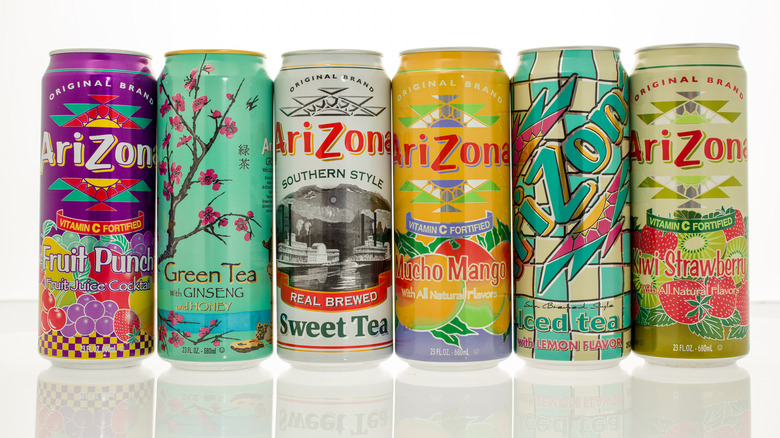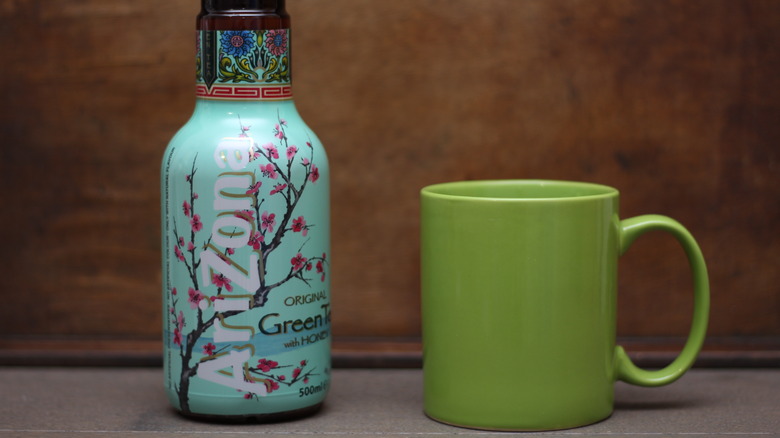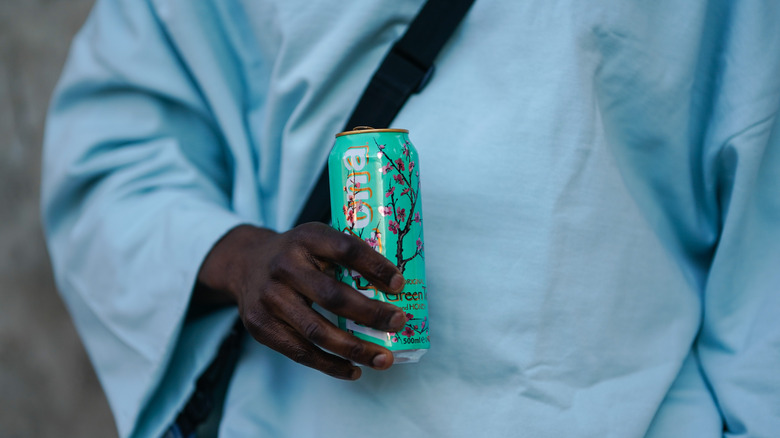Why AriZona Iced Tea Is Still 99 Cents Despite Inflation
AriZona Iced Tea has been around since 1992, but not much has changed in the decades since. Notably, the price for its iconic cans is still the same as it was when the brand was founded: 99 cents.
The reason this is possible, despite inflation (a 1992 dollar has less than half its value in 2024), is that the company's founder and co-owner, Don Vultaggio, wants it that way. "I'm committed to that 99-cent price — when things go against you, you tighten your belt," he told the Los Angeles Times in 2022.
By belt-tightening, Vultaggio is referring to the steps that have had to be taken to maintain the sub-dollar pricing. Most importantly, AriZona Iced Tea eschews conventional flashy advertising. There are no Super Bowl television commercials, and no celebrity spokespeople. Promotion is primarily accomplished via social media posts and the word-of-mouth endorsements provided by loyal customers. Of course, that's still not enough to help the company hold its price point against steadily rising inflation. Thus, Arizona Beverages has also had to change how it makes its products and streamline its distribution process to remain profitable — although the profit margin, like the amount of aluminum used in cans, is slowly shrinking.
How AriZona Iced Tea keeps it prices low
Since the prices of its ingredients and packaging are rising, Arizona Beverages has had to get creative to keep its trademark cans at 99 cents. This includes cutting back on the amount of aluminum required for cans. Yes, aluminum has been thinned by 40%. Efficiency has also been optimized, with cans now manufactured at twice the speed they were over twenty years ago. Distribution has been reworked as well, with the company building more factories to reduce shipping costs and having trucks run at night when there's very little traffic.
What more can AriZona Iced Tea do to stave off the inevitable inflationary pressures to raise its prices? Currently, the company is even at odds with some of its retail partners, who have attempted to charge more, even going so far as to cover the price information Arizona Beverages prominently displays on its cans. The company responded with a social media campaign, reiterating its commitment to the now-famous price point.
More recently, Arizona has reduced the size of its iced tea cans from 23 to 22 ounces, although this change was announced as a design rather than a cost-cutting measure. The price of iced tea in plastic bottles was also raised, highlighting the fact that the company has many other products in its portfolio (like its Arnold Palmer flavored drink, for example) and the prices for those have not been fixed like those of the iconic cans.
Low prices drive the marketing plan for AriZona iced tea
Arizona Beverages' refusal to raise the price of its hydration-boosting iced tea cans may seem stubborn, but it's extremely valuable from a marketing perspective. The company's website notes that the cost of gas has almost tripled since 1992, while its iced tea cans are still 99 cents. But more than simply highlighting how much the prices of everything else have gone up (including those of other iced tea brands), the stable pricing for AriZona Iced Tea helps to build trust and inspire brand loyalty among its consumers (much like Aldi's low grocery costs keep shoppers coming back).
The cans remain the company's biggest selling product, accounting for nearly a quarter of its total revenue. However, that percentage undersells their popularity. Approximately one billion of the less-than-a-dollar cans are sold on an annual basis. Little wonder, then, that the company started a #99centsequals99cents social media campaign to prevent retailers from raising prices.



